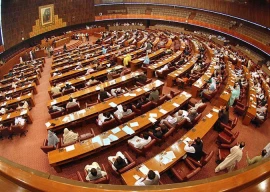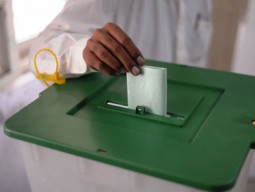
ISLAMABAD: Pakistan is facing an unprecedented shortage of 7.6 million housing units, which forces more than half of the country’s urban population to live in slums, reveals a latest World Bank report.
In its report Expanding housing financing to the underserved in South Asia, the World Bank said that six million units are needed by the two lowest-income groups, which by any means are not in a position to afford them due to elite-tilted house finance procedures. Total available housing units are 20.5 million.
Currently, 25 commercial banks are offering mortgage finance in Pakistan and the House Building Finance Corporation (HBFC) is the only state-owned corporation that caters to the financing needs of middle- and low-income groups.
“Due to acute housing shortages people are compelled to live in unhealthy conditions,” it notes. “More than 50 per cent of the urban population lives in slum areas. The lack of affordable housing is pervasive because of the exorbitant mark-up on interest rates, high real estate prices and eroding incomes of middle and low-income groups.”
In addition to rising land prices, the cost of construction material has been increasing considerably, particularly that of cement and iron. Unavailability of developed land, coupled with high prices of construction material, has compounded the problem of housing shortage in Pakistan.
The report says average national occupancy rate per dwelling is above six persons and density per room is 3.5 people, against the international standard of 1.1 per room.
The factors responsible for non-availability of housing units are generic population growth, short supply and depletion of existing stocks. As many as 700,000 individuals are added up to the population every year due to high population growth rate. Contrary to that, the addition to the existing housing units is only 300,000 annually.
The report says the lowest two income segments make up two-third of the population. The group with an income range of Rs6,000-12,000 per month that represents 40 per cent of the population, can afford a mortgage between Rs200,000 and Rs500,000, but it is not enough to have a home in cities. This group is exposed to an estimated housing shortage of three million units.
The lowest 20 per cent, with incomes below Rs6,000, can afford nothing above Rs200,000 and they face a housing shortage of 1.5 million units.
“As a result, lower income groups expand into illegal habitats and squatter settlements (katchi abadis) in major cities,” says the report. These unregulated tracts of land are scattered throughout the landscape of large cities and over the years, they have sprouted to fulfill the housing needs of the low-income stratum of the society.
More than half of the major cities like Faisalabad, Karachi, Lahore, and Peshawar, have katchi abadis. Karachi alone has 600 to 800 such illegal settlements, sheltering about 7.6 million people out of the total city population of 15.1 million people. In Sindh province, there are 1,300 katchi abadis covering 24,300 acres of government-owned land and 1,700 acres of private land. The situation is also difficult in Punjab, with 902 such illegal settlements.
The WB report suggested that the government can strengthen property rights and land administration process in collaboration with the private sector. It can also strengthen the property development framework, support the building industry, facilitate the growth of primary and secondary housing finance markets, and introduce useful targeted housing finance programmes.
Published in The Express Tribune, October 9th, 2010.



































































COMMENTS (1)
Comments are moderated and generally will be posted if they are on-topic and not abusive.
For more information, please see our Comments FAQ